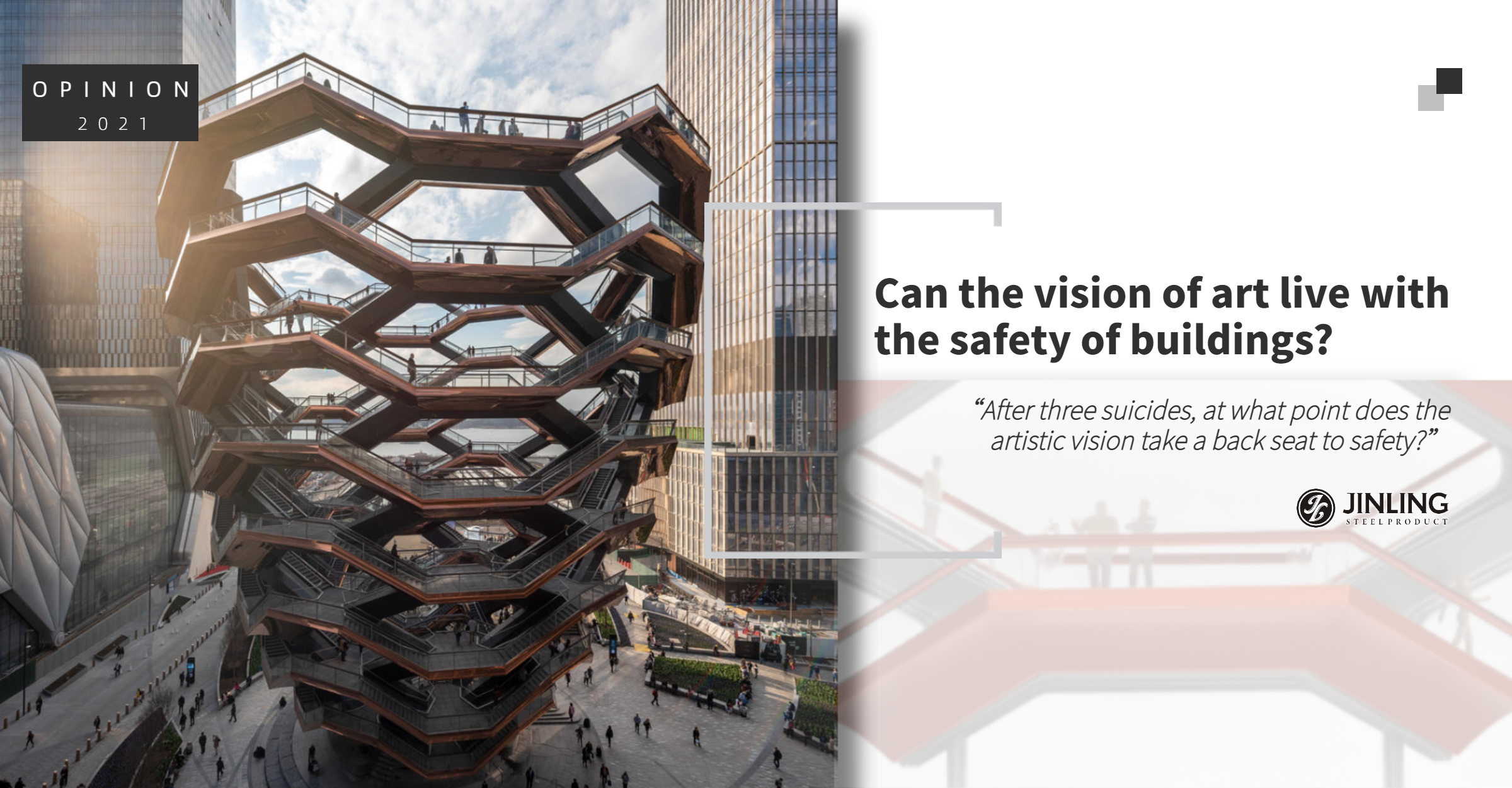“After three suicides, at what point does the artistic vision take a back seat to safety?”
—— Mr. Kern, the board chairman
The Vessel in NYC is currently closed, which has begun since the third suicides happened in January within one year. The Vessel is designed to be an interactive public art building, but is the building really friendly to visitors? Is safety now beyond the vision of art? What is a better, friendly, and safer art future?
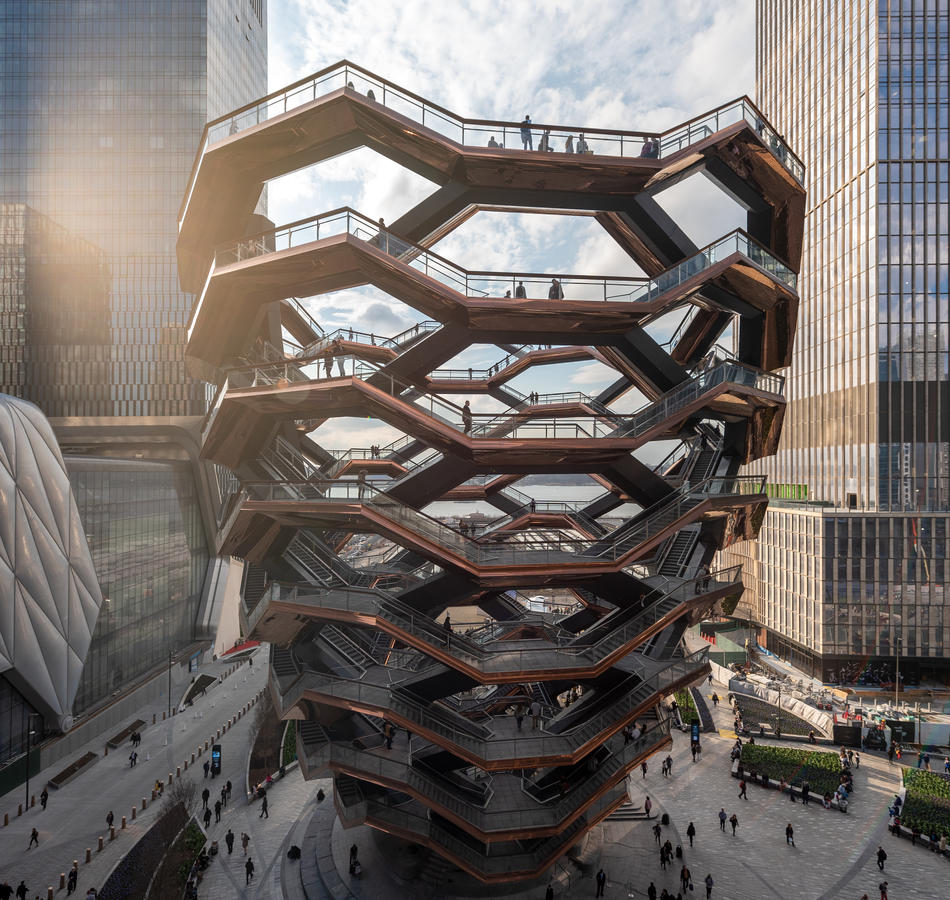
1
The Vessel
Description (source from heatherwick.com):
Heatherwick studio was invited to design a public centerpiece for Hudson Yards, a new 11-hectare development on Manhattan’s west side being constructed above a huge rail yard. To create something memorable, the studio decided to create a structure that visitors might be able to use and touch, not just to look at. A design was developed for a new social landmark that could be climbed and explored by everyone. Influenced by the Indian stepwells of Rajasthan, formed from multitudes of stone staircases reaching down into the ground, the studio became interested in the mesmerizing visual effect of the repeating steps, flights and landings. Composed of 2,500 steps, 154 flights, 80 landings and 16 storeys, the resulting design. Is a climbing frame to lift people above the new square and reveal views across the Hudson River and Manhattan.
Fabricated in Venice, Italy by specialist steel fabricator Cimolai, Vessel’s complex architectural framework of raw welded and painted steel contrasts with its polished copper-coloured steel underside that reflects the surrounding city. Forming a major free public attraction at the heart of this new district, Vessel represents an intention to create an extraordinary new kind of public legacy for New York.
Its beehive-esque design was unveiled in late 2016, construction on the project broke ground in April 2017, and it topped out eight months later. It officially opened in March 2019 to mixed reviews.
Undoubtedly, the Vessel gives an alternative possibility of public space, where people can enjoy new perspectives of the city and one another from different heights, angles and vantage points.
According to Heatherwick, the sculpture intends to “lift people up to be more visible and enjoy new views and perspectives of each other,” which explains the 154 interconnecting flights of stairs with 2,500 steps and 80 landings. Curious climbers can now sign up for a reservation to take in the whole thing, which rises 150 feet above the ground.
2
The Problems
With the third tragedy that happened in January, the Vessel has been closed emergently. It is unclear when the building will reopen to the public. The Vessel is an attempt, I would say. Unlike other buildings where there has an observation area, the Vessel itself is a huge observation space but meanwhile is a space that people can climb up and explore like they do in a building. What is more, it is a landmark which is entitled with a function of art. The identity of the Vessel is abundant, or ambitious.
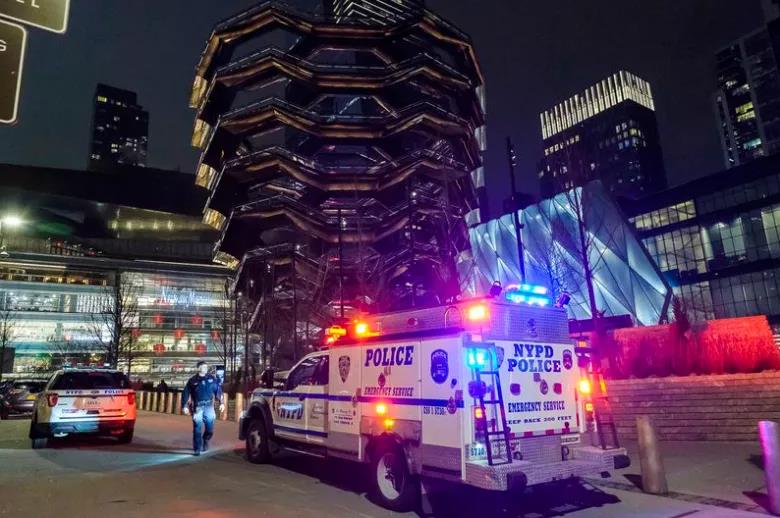
- It is a space, as Heatherwick website defines.
How to define the Vessel? What is it, an artwork, a structure, a commercial building?
From the project list on the Heatherwick website, there are four categories, buildings, spaces, infrastructure, objects, and the Vessel is in the group of spaces. The “space” here, more precisely, should be “public space”. A public space is a place that is generally open and accessible to people.
Public space has also become something of a touchstone for critical theory in relation to philosophy, (urban) geography, visual art, cultural studies, social studies, and urban design. The term 'public space' is also often misconstrued to mean other things such as 'gathering place', which is an element of the larger concept of social space. Public spaces have often been valorized as democratic spaces of the congregation and political participation, where groups can vocalize their rights.
- It is 16-floor height, wide opened in the air, waist-high stairway to nowhere.
The New York Times called it “a stairway to nowhere.”
From the drawing to the completion, it is in guardrail where the shortfall of height has been most glaring to us.
To create a strong visual effect, visitors can look down to the ground through the spiral stairs, and don’t forget it is an independent, 16-floor high public place in the air! Not to mention there is little protection and security in the upper wide-open area. It is wild to us. The whole structure itself looks like to makes the “ladder effect” to an extreme level.
- It is not a friendly space for everyone.
As an interactive structure, and what Heathewick wants to bring to the public that is gathering people, the space should have been accessible to every citizen and visitor. But the fact is that not everyone can be invited to the space. If one wants to explore Vessel, he/ she needs to be energetic and maneuverable. Deep down into the structure of Vessel, it is a massive, overlapping and continuous stairs and naturally, it hampers many people at the entrance. The wheels, the baby carriages, less-athletic are failed to find a way into the interaction.
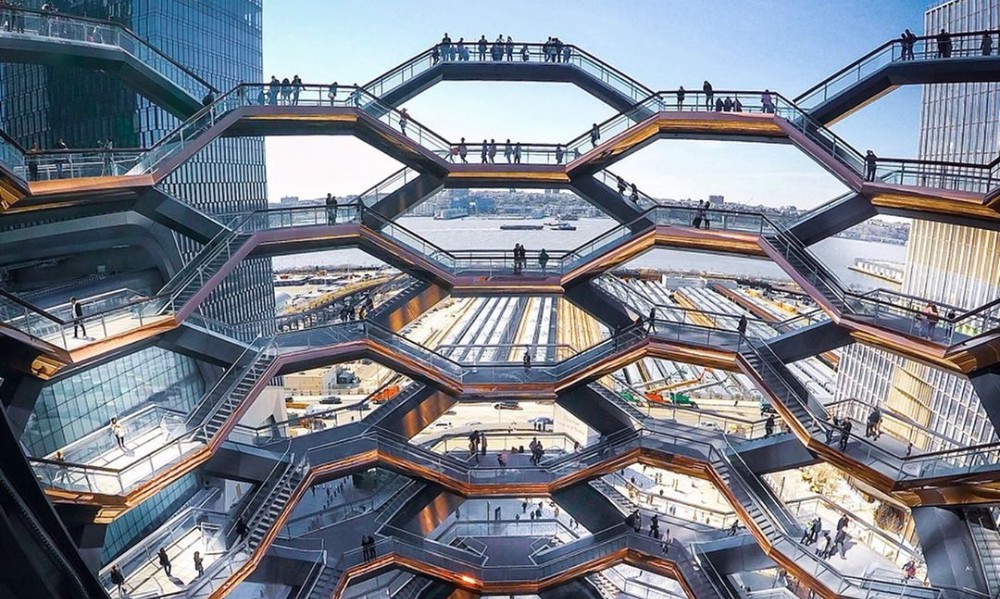
3
Conflicts
- Can be building lead people to death?
Audrey Wachs, the former associate editor of The Architect’s Newspaper, wrote in a 2016 critique.“As one climbs up Vessel, the railings stay just above waist height all the way up to the structure’s top, but when you build high, folks will jump.”
The continuous incidences stirred the internet. Some hold a view that suicide happens everywhere. It is a spontaneous behavior that does nothing to with the place he/she picks. If people want to find out the reasons for the suicides, they should think of the psycho-social factors, instead of the height of a guardrail. Others say that it is a lack of protection and monitoring in this air-opening space, which makes it easier for people to realize. And the easiness to scale the guardrail even escalate the extreme attempt. A person who is for this opinion commented,” looking down from high, the helix, spiral-shaped abyss, is it the eye of the devil or the embrace of the angel?”
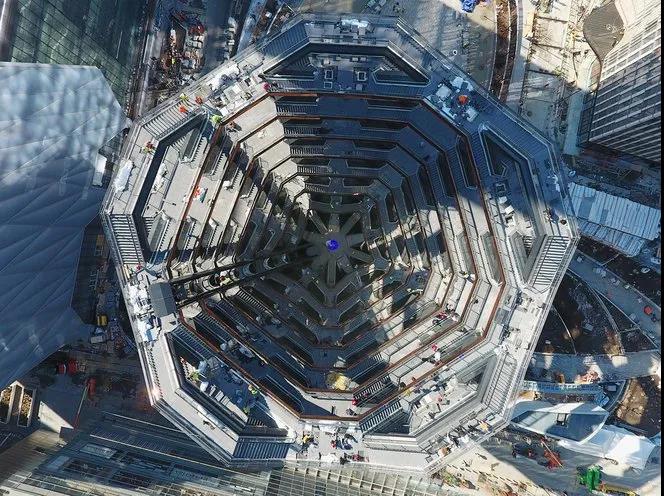
- Is the local IBC a safe code for modern structures today?
More buildings, structures are invented, can the building codes provide enough security to citizens?
Section 1012 Handrail
1012.2 Height
Handrail height, measured above stair tread nosings, or finish surface of ramp slope, shall be uniform, not less than 34 inches (864 mm) and not more than 38 inches (965 mm). Handrail height of alternating tread devices and ship ladders, measured above tread nosings, shall be uniform, not less than 30 inches (762 mm) and not more than 34 inches (864 mm).
Section 1013 Guards
1013.2 Height
Required guards shall be not less than 42 inches (1067 mm) high, measured vertically above the adjacent walking surfaces, adjacent fixed seating or the line connecting the leading edges of the treads.
Unlike the observation decks of the Empire State Building and One World Trade Center, Vessel is a totally independent tourist space. It is classified into the same category as the amusement park rides, stadiums and stands. But stadiums and amusement parks will not allow people to fall from high altitudes. In the case of Vessel, the building code fails to take its 150-foot-tall unobstructed height into account.
“Because the Vessel’s chest-high barrier is all that separates the platform from the edge, the likelihood of a similar, terribly sad loss of life cannot be ignored.”
Mr. Kern, the board chairman, wrote in a letter.
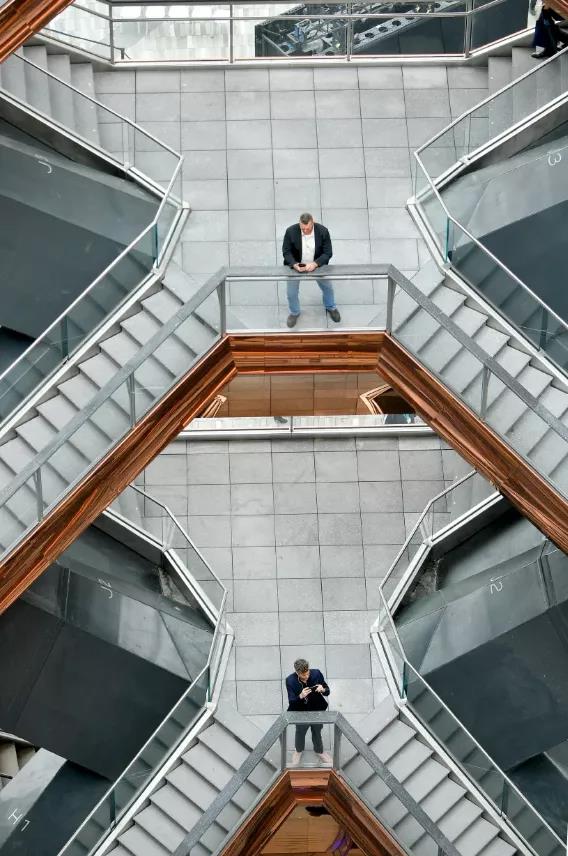
The guardrails are waist-height.
- Should the building take the responsibility of the tragedies?
People found a place and decided to commit suicide. Did they think it was an easy place for them to do or did the place induce them to do so? Suicide seems like a spontaneous behavior that does nothing to do with the spot. However, Charlotta Thodelius, PhD, Architecture and Civil Engineering, Building Design finds that "I have observed that younger people commit a different type of suicide from adults", "They are spontaneous and act very impulsively. They might not want to actually die, they just want something to stop. It might be something that has been going on for a while, but it can also be something that, as adults, we might find quite trivial - breaking up with a partner, fighting with parents, doing badly in a test, or being gossiped about." Typically, in the cases of Vessel, three persons committing to the tragedies were respectively 19~24 years old.
The solution may be simple. Making it more difficult for them to take action. “If there are obstacles to taking their own life in these places, there is a high chance that they have no plan B and will abandon the attempt. After the acute stage of the crisis passes, they may not make another attempt to commit suicide.”(cited from Better architectural design could prevent youth suicide)
A higher guard, however subtle it seems, hinders the sudden attempts and thoughts, and leads people back down on earth.
Mr. Ken believes that the best way to stave off further suicide attempts is to increase the height of the barrier. “That’s the only thing that’s going to work,” he said.
JINLING OPINION:
A good safety of a design is a social responsibility. When designers are considering creating an interactive, better-experienced space, building or whatsoever, design should not run beyond safety, or design should focus more on safety.
